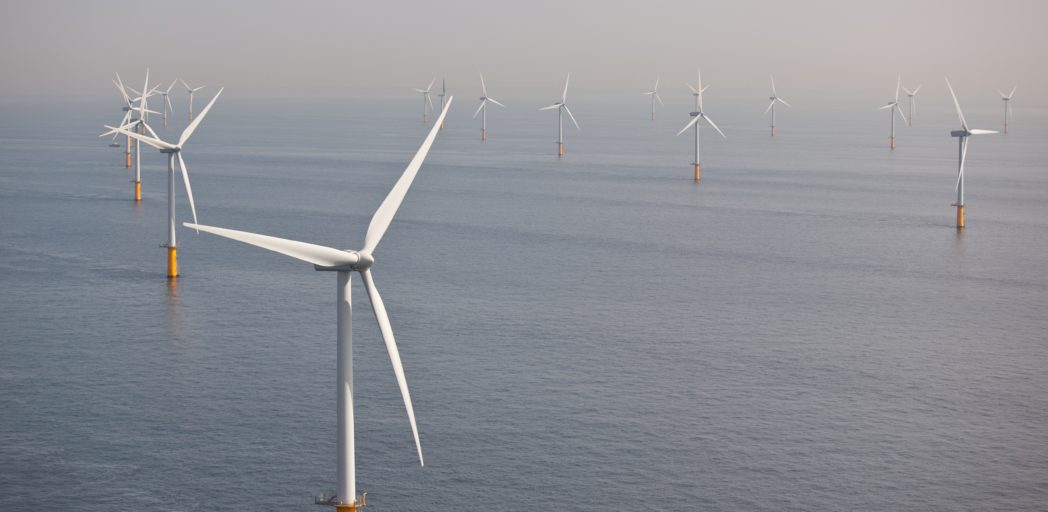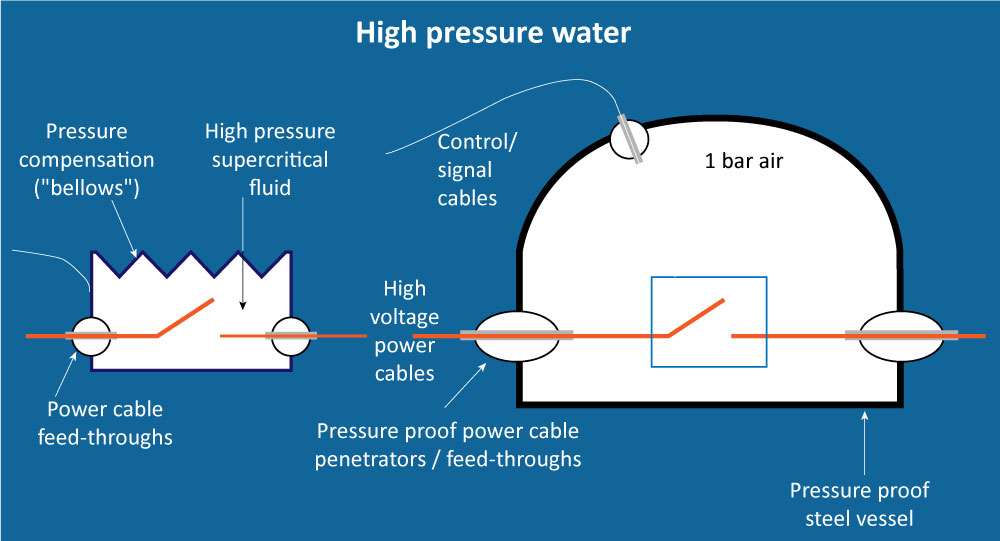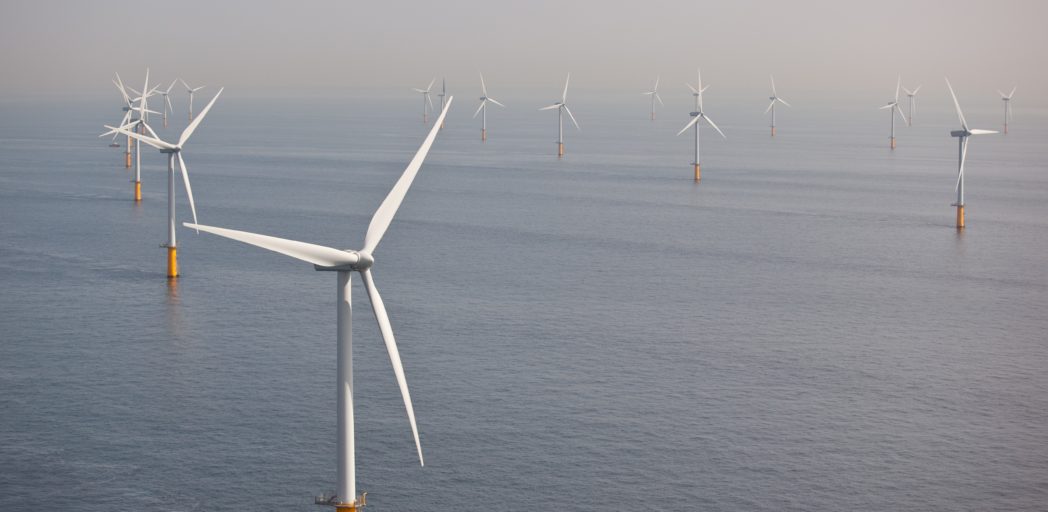Today, the installation of circuit breakers under high pressure at seabed raises challenges demanding complex and expensive solutions.
Guest blogger: Egil Viken, summer researcher at SINTEF Energy Research
Contact: Nina Sasaki Støa-Aanensen, Research Scientist at SINTEF Energy Research
Traditionally, subsea circuit breakers have been of the same type as those used on land, except that they are housed in vessels that protect them from the high pressure. SINTEF, with funding from the Research Council of Norway, is now conducting research as part of the project “Current Interruption in Supercritical Fluids” into how this situation can be turned on its head. We are proposing to exploit the high pressures to our advantage by using supercritical nitrogen in the circuit breakers.

What is supercritical nitrogen, and what can it be used for?
A substance exists in a supercritical state when its pressure and temperature exceed a given critical point such that it behaves simultaneously both as a gas and a liquid. For example, a substance may have a high, fluid-like, density, but nevertheless exhibit very low viscosity, like a gas.
However, it is rare that we encounter supercritical conditions (the right temperatures and pressures) in the natural environment. For this reason, such conditions have to be created artificially, especially when it comes to pressure. The advantages of using supercritical substances in subsea circuit breakers is that the beneficial properties of each of the fluid and gaseous states can be combined to ensure effective current interruption.
Why do circuit breakers have to be installed on the sea floor where conditions are so challenging?
The growth in development of offshore facilities linked to the oil and gas and wind power industries has promoted the need for a more complex electrical power distribution infrastructure. The most practical solution is to install facilities on the sea floor to ensure the safe movement of marine traffic and to avoid the construction of expensive platforms used to house switching stations.

The problem is that the sea floor can be a rather harsh environment, especially with regard to the high ambient pressures. As noted above, circuit breakers have traditionally been housed in complex and expensive protective pressure vessels. This is why we are looking into other possible solutions.
In the case of supercritical subsea circuit breakers, the pressure problem is becoming part of the solution
Instead of having to install protection for circuit breakers, the high pressure can be turned to our advantage. High pressure on the sea floor, combined with the low critical temperature of nitrogen, means that nitrogen is supercritical under sea floor conditions!
The full-scale mechanisms of current interruption in such supercritical substances have not been adequately researched, and this is what the SINTEF project is all about. If the project is a success, it will result in simpler and less expensive breakers that may, for example, make the generation of offshore wind power more competitive, leading in turn to greener offshore industrial development.
Current interruption isn’t as simple as just switching off the lights
Why all this fuss about current interruption? Isn’t this something we all do every day when we switch off the lights or pull a plug from its socket? Why can’t we just cut off the current?
First of all, we need to know that an arc flash is always generated when we separate two conducting contacts, such as when we remove a plug from its socket. This arc is usually so small as to be invisible. It also extinguishes itself, just by creating an airgap between the plug and the socket. In contrast, the current and voltages associated with the main distribution grid are much greater than the everyday levels that we are used to. The electric arc flash is much more powerful.
As an illustration, try to imagine “pulling the plug” on the main distribution grid. Leaving aside the possibility that you would be toast before even lifting your little finger, the current will continue to flow for as long as the arc is not extinguished, no matter how far you pull it from the wall! However, if you had cooled the arc sufficiently with a forced gas flow at the right time, it would have been easier to extinguish the arc. This is the heart of the challenge linked to the breakers needed to interrupt the current in the distribution grid.
Substances in the circuit breakers are crucial to their function
During a current interruption process, ions and electrons are generated and then accelerated between the breaker contacts. Thus, we have charged particles in motion – in other words, a current. The current flows in a hot plasma, an electric arc, and can only be interrupted if we introduce sufficient cooling to recombine the ions and electrons so that only non-charged particles remain.
This must happen fast enough to ensure that there are sufficient non-charged particles to resist the stresses generated when a new high voltage builds up across the breaker. A fluid’s ability to be ionised, accelerated and recombined at the right times and temperatures are just some of the properties that define effective current interruption medium. This is why the arc medium, in this case supercritical nitrogen, is crucial to the way in which the breaker functions.
Summer researcher Egil Viken explains the use of supercritical nitrogen in subsea circuit breakers (In Norwegian)
There are many reasons for using supercritical nitrogen in circuit breakers
Supercritical nitrogen has proved to be the breaker medium of choice also for reasons other than those linked to its being ideal under sea floor conditions. The gas is inexpensive and accessible and does not contribute to climate change.
Research to date has provided satisfactory results, demonstrating that resistance to ionisation increases at high pressures, and that beneficial properties for effective cooling from the liquid and gas phases are combined in the supercritical state.

Next step is to put supercritical nitrogen to use
The next thing that SINTEF will be looking into is the ability to achieve rapid recombination. However, at high pressures, other mechanisms are active that may counteract the benefits of using supercritical nitrogen. For this reason, our conclusions are not entirely positive, but the approach is promising and may enable us to change the way we think about subsea power distribution.









Comments
No comments yet. Be the first to comment!